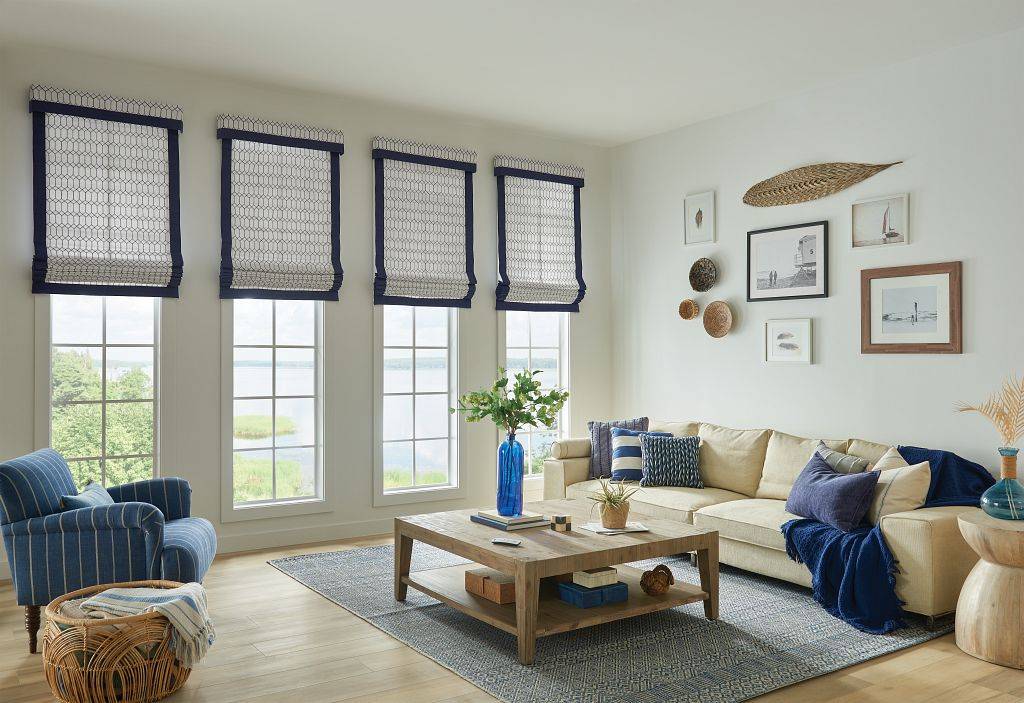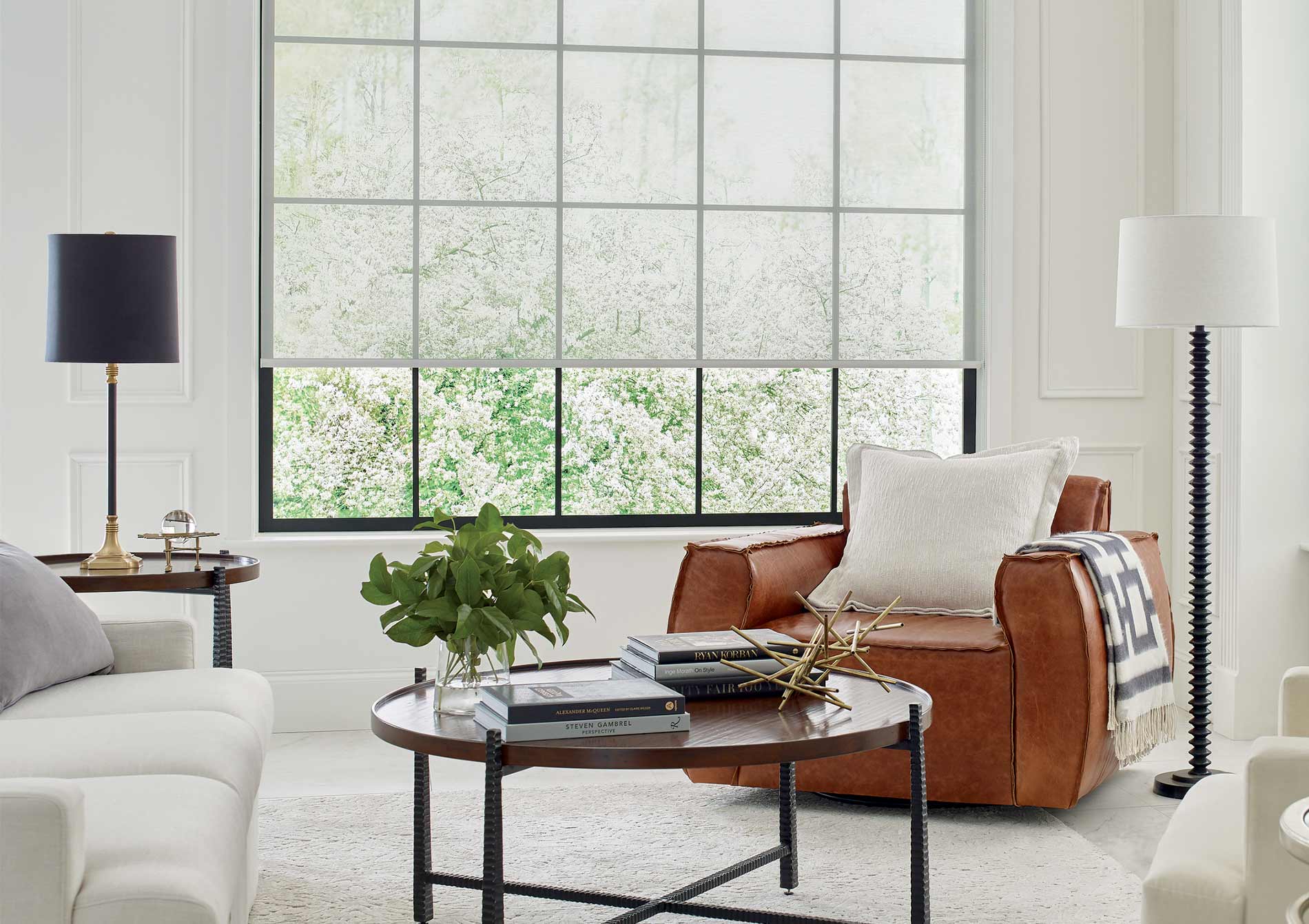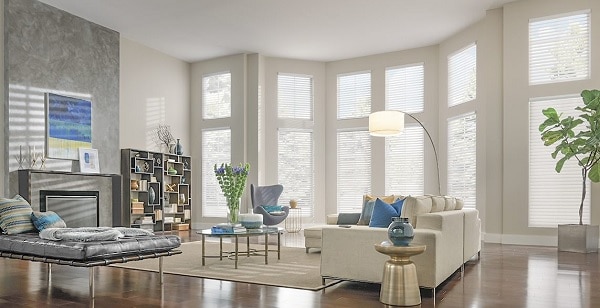The Ultimate Guide to Blinds: Kinds, Benefits, and Selecting the Right Fit for You
The world of window treatments is large and differed. Blinds are available in many styles, each offering distinct advantages for different setups. Understanding these choices is crucial for making notified decisions. Furthermore, variables like material selection and space capability play a considerable role. As one considers the ideal balance in between looks and functionality, the subtleties of gauging and maintaining blinds also arise as crucial elements. What should one focus on when selecting the ideal home window remedy?
Kinds of Blinds: A Thorough Review
Blinds function as both visual and functional components in interior decoration, offering various alternatives to match diverse choices and demands. Among one of the most popular kinds are Venetian blinds, identified by straight slats that can be readjusted for light control and privacy. Roller blinds, recognized for their simpleness and convenience, can be found in a variety of materials and patterns, making them appropriate for traditional and contemporary setups. Vertical blinds, commonly utilized for larger windows or gliding doors, enable very easy change and are frequently made from material or vinyl.
Roman blinds, with their sophisticated folds up, add a touch of elegance to any type of area, while cellular tones supply insulation and power performance. Additionally, bamboo blinds supply an all-natural, environmentally friendly option, infusing rooms with warmth. Each type has one-of-a-kind functions and styles, ensuring homeowners can locate the best suitable for their certain style and functional requirements.
Advantages of Setting Up Blinds in your house
The setup of blinds in a home offers several substantial benefits. They offer boosted personal privacy control, permitting homeowners to manage presence from the exterior. Furthermore, blinds add to energy performance by assisting to handle indoor temperatures, minimizing the reliance on heating and cooling down systems.
Improved Personal Privacy Control
When home owners look for to boost their space, installing blinds uses a substantial benefit secretive control. Blinds give a versatile remedy for regulating presence from both the exterior and interior of the home. By adjusting the slats or elevating the blinds, individuals can conveniently take care of the amount of light getting in while at the same time obstructing the view from outdoors. This flexibility permits home owners to produce a comfortable environment without compromising all-natural light. In addition, different designs and products are offered, making certain that home owners can select options that flawlessly blend with their decoration while enhancing privacy. Inevitably, the installment of blinds offers as an effective ways to safeguard individual area, urging leisure and comfort within the home environment.
Power Efficiency Enhancement
Setting up blinds not just boosts personal privacy but additionally substantially adds to power efficiency in the home. By regulating natural light and minimizing heat transfer, blinds can assist keep a consistent indoor temperature. Throughout warmer months, shutting blinds can shut out too much sunlight, therefore decreasing the reliance on a/c. Conversely, in cooler months, they can offer insulation by trapping heat, lowering home heating costs. Furthermore, energy-efficient blinds, such as mobile tones, are made specifically to lessen power loss. By buying quality blinds, house owners can develop an extra comfy living environment while also lowering power expenses. Eventually, the setup of blinds functions as a useful service for those looking for to improve both comfort and power effectiveness in their homes.
How to Pick the Right Blinds for Each Area
Exactly how can one figure out one of the most ideal blinds for every room in a home? The selection process begins with reviewing the space's purpose and atmosphere. In living locations, functional blinds that enable light control while making sure privacy are optimal. In rooms, blackout blinds can boost sleep quality by obstructing out exterior light.
Bathrooms and kitchen areas call for moisture-resistant choices to withstand moisture, making plastic or synthetic wood blinds ideal options. In addition, the preferred aesthetic plays an important role; coordinating blinds with the area's decoration boosts the general atmosphere.
Think about the amount of natural light each room obtains; lighter blinds might be better for dark rooms, while darker choices can add heat to sunlit areas. Ultimately, understanding details needs and preferences for functionality and design will certainly guide homeowners in making informed choices tailored to every area's unique needs.
Material Options: Wood, Vinyl, Material, and More

Timber Blinds Conveniences
Timber blinds are a popular option among homeowners seeking a mix of aesthetic appeals and performance. One significant advantage of timber blinds is their all-natural anchor charm, offering a cozy and inviting look that enhances any kind of interior design. They are offered in various coatings and shades, permitting modification to match individual design. In addition, wood blinds provide superb light control and privacy, as their slats can be conveniently readjusted to filter sunshine while preserving seclusion. Their toughness is an additional benefit; with correct care, timber blinds can last for several years without blind store near me losing their appeal (Phoenix window treatments). Moreover, they have shielding residential properties, aiding to regulate indoor temperature levels and possibly decreasing energy costs. In general, wood blinds combine sophistication and usefulness, making them an ideal selection for numerous homes
Plastic Toughness Includes
Vinyl blinds stick out for their exceptional resilience, making them a useful option for various atmospheres. These blinds are immune to moisture, making them excellent for locations such as bathroom and kitchens where humidity can be a concern. Unlike wood, vinyl does not warp, fracture, or discolor under sunlight, ensuring durable efficiency and very little maintenance. In addition, they are readily available in a selection of styles and colors, permitting homeowners to customize their look without sacrificing sturdiness. Vinyl blinds are likewise easy to clean; a simple wipe with a damp fabric is usually adequate to keep them looking fresh. On the whole, their resilience and low upkeep make plastic a preferred alternative among house owners looking for both capability and aesthetic charm.

Fabric Choices Overview
Blinds can be found in a variety of material choices that satisfy various visual and functional demands. Typical materials consist of wood, plastic, and material, each offering distinct benefits. Timber blinds supply a classic, cozy aesthetic and superb insulation yet call for maintenance to protect against warping. Vinyl blinds are moisture-resistant and resilient, making them perfect for high-humidity locations like cooking areas and shower rooms. Textile blinds, readily available in many shades and patterns, supply adaptability and soft qualities, enhancing home design while supplying varying degrees of light filtration. Furthermore, options like artificial timber supply the appearance of natural timber with added longevity. Visit Website When selecting blinds, it is important to examine the specific demands of each room to assure peak performance and design.
Gauging and Setting Up Blinds: Tips for Success
Determining and installing blinds may appear uncomplicated, careful attention to information is crucial for achieving a perfect fit. It is crucial to measure the window structure properly, noting both the size and height. For inside places, subtract a percentage from the width to assure a clean fit, while outdoors mounts must expand beyond the structure for better light control and visual appeals. Utilizing a steel tape procedure is advised for accuracy.
When setting up, gather all required tools, such as a level, drill, and screws. Adhering to the manufacturer's directions is critical to assure proper installation. It is recommended to pre-drill openings to avoid damaging the braces. Furthermore, having a 2nd person can make the process smoother, specifically when lifting larger blinds. After setup, examination the blinds to validate they operate efficiently and change as essential for maximum capability.
Upkeep and Take Care Of Resilient Blinds
Appropriate maintenance and care can greatly expand the life expectancy of window coverings. Routine cleaning is necessary; utilizing a soft fabric or a microfiber duster can effectively get rid of dust without damaging surfaces. For deeper cleaning, a mild service of soap and water is advised, applied with a soft sponge, assuring that no dampness leaks into the mechanisms.
For textile blinds, area cleansing is advisable, while wooden blinds need to be treated with a wood-safe cleaner to preserve their coating. Avoid subjecting callous too much moisture, heat, or direct sunshine, which can result in bending or fading.
In addition, routine assessment of systems and cords can stop wear and tear. It's wise to comply with producer guidelines for specific products, as different blinds might have special treatment requirements. By taking on these basic maintenance techniques, house owners can assure their blinds remain practical and cosmetically pleasing for many years ahead.
Often Asked Concerns
Can Blinds Aid Reduce Power Prices in My Home?
Blinds can efficiently minimize energy expenses in a home by giving insulation, blocking warm throughout summer season, and maintaining warmth in winter months. Their capability to manage light and air circulation improves energy performance throughout the year.
Exist Child-Safe Options for Blinds?
Yes, there are child-safe choices for blinds. These consist of cordless designs, retracting cables, and safety and security devices that get rid of dangling cables, guaranteeing a protected setting for kids while maintaining functionality and visual charm in homes.

How Do Blinds Compare to Curtains or Tones?
Blinds normally provide extra exact light control and area efficiency than tones or drapes. Phoenix window coverings. They are typically easier to maintain and cleanse, while drapes supply a softer visual, and tones can supply varying insulation advantages
Can I Personalize the Design And Color of My Blinds?
Yes, blinds can be tailored in both design and color. Various manufacturers use a wide variety of options, enabling consumers to choose products, patterns, and hues that suit their personal aesthetic and home decoration.
What Is the Typical Lifespan of Various Types of Blinds?
The ordinary lifespan of blinds differs: wood blinds last 5-10 years, synthetic timber 7-10 years, light weight aluminum 5-10 years, and fabric tones around 5 years, depending on upkeep, direct exposure, and usage to sunlight.
Shower rooms and kitchens require moisture-resistant options to stand up to humidity, making plastic or fake timber blinds ideal options. Timber blinds provide all-natural charm and warmth, while vinyl offers sturdiness and convenience of maintenance. One significant advantage of timber blinds is their all-natural appeal, supplying a warm and welcoming appearance that enhances any type of interior decor. Furthermore, timber blinds offer excellent light control and privacy, as their slats can be quickly changed to filter sunlight while keeping privacy. For material blinds, spot cleansing is a good idea, while wood blinds ought to be treated with a wood-safe cleaner to maintain their coating.